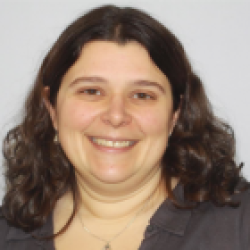
When I facilitate a Buck PBL 101 workshop, in my mind there is nothing that can bring the second day to a screeching halt quite so much as the comment, “We’ll do this during our PBL block.” As soon as I know participants are planning to facilitate their project outside of their regular schedule, I know that some of the guarantees I have made during the workshop are not going to work out. For example:
- I tell participants that teaching content through a project will not take much more time to facilitate than it would take to teach it a more traditional way. Once teachers create a time for dedicated PBL work, however, they are spending more time on the project than they had initially planned to use on their content in the classroom.
- I tell participants that they can cover their required content using a project, and that students will meet learning targets as a result of completing a carefully designed project based learning unit. Often, however, planning a PBL unit to happen in its own time frame leads participants to think of enrichment topics rather than topics within their required curriculum.
- I tell participants that teaching through projects will develop within students a need to know what they are learning. But if all the project work happens outside students’ regular learning day, they won’t make that connection as easily.
This is, of course, setting aside crunch time at the end of a project, when product work can overrule everything. Overall, project based learning should be...well, it should be the learning your class is doing every day during regularly scheduled learning time. What does that look like? Let’s peek into Mr. Kingsland’s 5th grade class as they spend a day in middle of their PBL unit, “Fishing Can Be a Real Drag.”
9:30-10:45am
This is Mr. Kingsland’s literacy block. Before he begins a whole-class mini-lesson, he reminds his students that, because their project involves designing sustainable fishing nets for use in the Gulf of Maine, his students have identified a need to know the current fishing regulations for that area. Using his projector and laptop, he shows students where to access the fishing regulations on the Department of Fisheries and Wildlife section of Maine’s state website. He then completes a 10 minute mini-lesson reminding students about how to use Tables of Contents, comparing printed versions with the online version on the state website. Students work with partners to find answers to their need-to-know questions using the website and a graphic organizer Mr. Kingsland created. Mr. Kingsland keeps some students at his table to work more closely with, as he thinks they might struggle with the work.
10:45-11:30am
During his writing block Mr. Kingsland continues to focus on writing formal letters, a part of his writing curriculum. Students have drafted letters to contacts in the Coast Guard and NOAA, asking for help with specific questions they have about the project. Today, they are participating in a critique and revision protocol to get their letters ready to e-mail to their recipients.
11:30am - 12:30pm
Lunch and Recess
12:30- 1:30pm
Math is a time for students to focus on measurement. Mr. Kingsland has a math program he uses that is required by his school district. He has planned this PBL unit to coincide with the measurement unit because it is a good match for the products students will create. Students will need to convert between measurement units as they study different types of fish and design their sustainable nets, so today Mr. Kingsland is teaching a math lesson on measurement conversion from the math program used in his district. Students will complete some math problem solving activities then participate in a discussion. Mr. Kingsland will be sure to tie the discussion into the need-to-know list for the project.
1:30-2:30pm
Mr. Kingsland’s science curriculum involves a focus on ecosystems. In order to best design sustainable fishing nets, his students have identified that they need to know the animals living in the Gulf of Maine ecosystem. They have spent two science periods doing research, and now they are beginning to create an energy web based on their findings. The energy web will help them see which fish might be small enough to swim out of their net and which they might need to design escape methods for. It also gives Mr. Kingsland a formative checkpoint to be sure his students are on the way to understanding how ecosystems and food webs work.
2:30-2:45pm
Mr. Kingsland guides his students in a reflection on the day’s work. First alone and then in teams, students think about whether there are any items on their need-to-know list that they can cross off as well as any new need-to-know questions they need to add to their list.
Glaringly absent from Mr. Kingsland’s schedule is his “PBL block.”
Instead of spending dedicated time on Project Based Learning that is separate from his other content area learning, Mr. Kingsland integrates project work into his existing schedule and curriculum. In this way, he is able to spend only the time he has available on the project as well as teach his students the curriculum he is required to teach. Most importantly, however, by making projects the way his classroom “does” learning, he is making a powerful statement to his students--their learning has authentic purpose and is important.
Want to learn more about PBL? Check out our books.
Register now for PBL World 2019.

